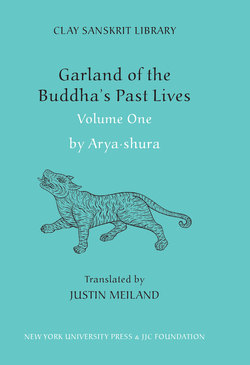Читать книгу Garland of the Buddha’s Past Lives (Volume 1) - Aryashura - Страница 17
На сайте Литреса книга снята с продажи.
Оглавлениеtoo far. As Meadows has pointed out (1986: 18f.), stories 33 and 34 instead clearly reflect the virtue of for bearance (ksanti), while story 31 focuses largely on giving (dana) and truth (an aspect of virtue), and story 32 on renunciation (also an aspect of virtue). Meadows argues that the last four stories should instead be seen as recapitulations of the first thirty and suggests that it was in fact never Arya·shura’s intention to tackle the last three perfections. On the contrary, since the first three perfections are suited to householders, and particularly kings, whereas the last three perfections are more suited to monks, the absence of the last three perfections is not a flaw but reflects the text’s focus on instructing the laity.
Turning away from the issue of perfections, there are also other ways in which the stories are bound together.13 Numerous themes, images, and metaphors are repeated, echoed, and developed across various narratives, forming a web of allusions and cross-references; for example, the motif that the Bodhi·sattva acts like a relative toward strangers, or the numerous idyllic portrayals of the forest, or the frequent reactions of devotion expressed by witnesses to the Bodhi·sattva’s deeds. Furthermore, while the general format of the work is unstable, the structure of the individual stories is largely predictable and fixed, creating a sense of expectation as the reader embarks on a new tale.
Every tale starts with a maxim. For example, story 30 begins: “If it results in the welfare of others, even pain is esteemed by the virtuous as a gain.” There then follows the phrase tad/yath” anusruyate (“it has been transmitted as follows”). After this a description of the Bodhi·sattva’s back- ________
